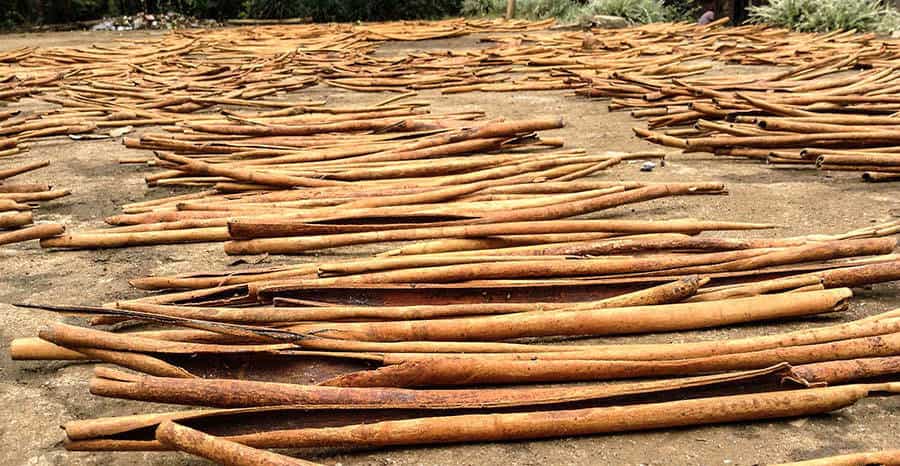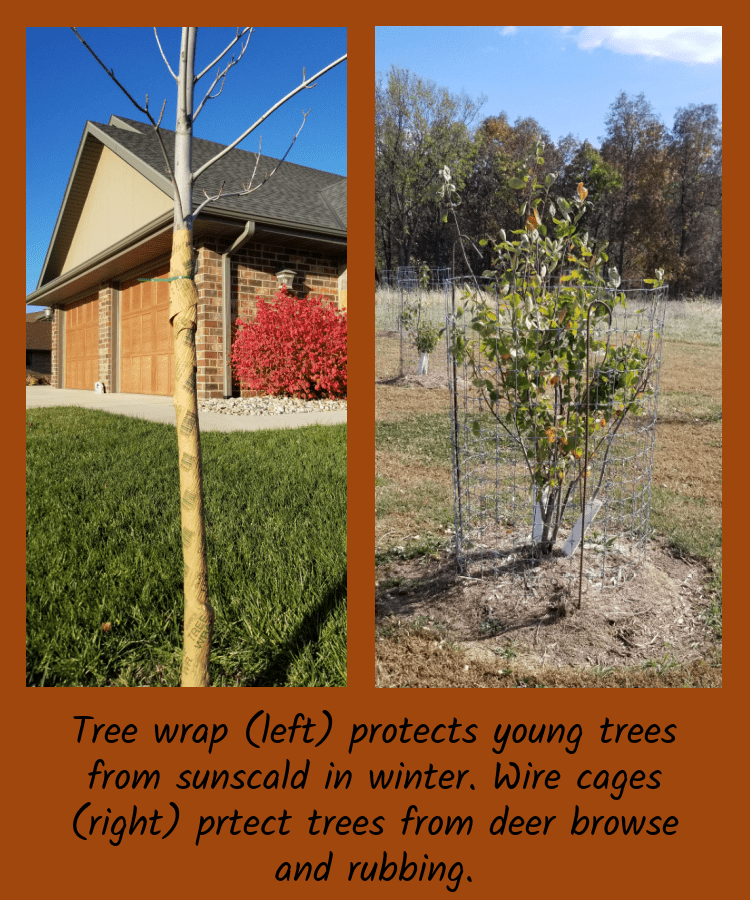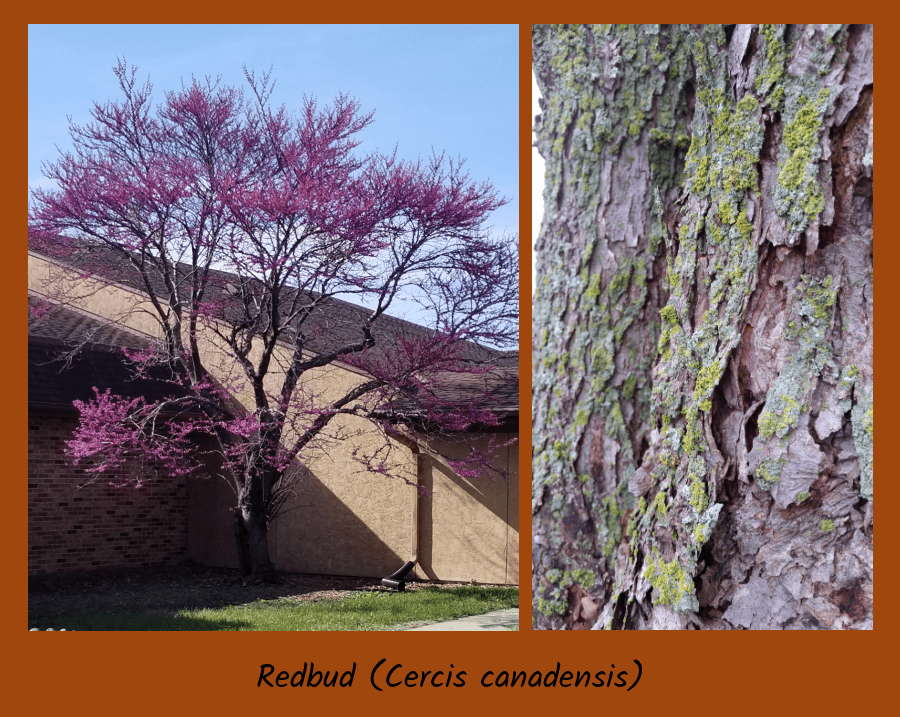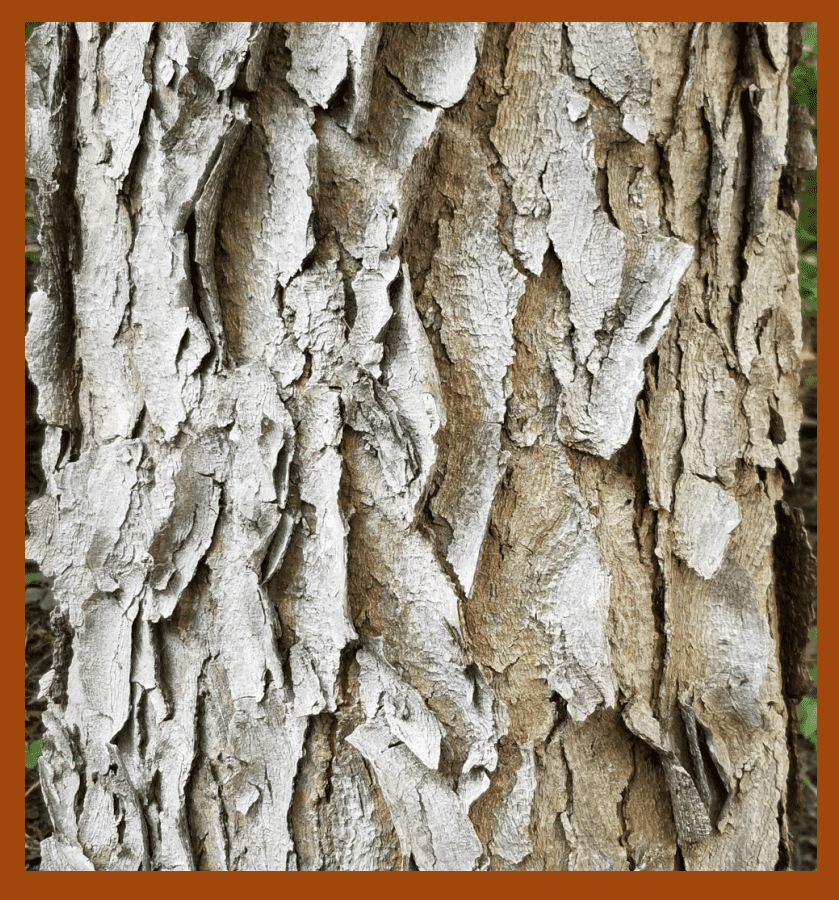Bark is of one of my favorite attributes of trees. Yes, leaves and flowers are more important to landscapers and homeowners, and even insects. But bark is not only important for overwintering insects, it is also important as a means of identification, as well as protective cover for the tree. And bark changes so much from early on in the tree’s life, that learning a tree’s individual bark can be quite difficult.
But why all the interest in the outside covering of the tree? Well, what about your skin? Do you need it? Can you live without it? No, you cannot. Just like your skin protects you, bark protects the inner workings of trees.
Besides protection from the sun and wind, bark does much more in the tree. It helps prevent moisture loss, protects from insects and animal damage, and it is waterproof.
The Structure of Bark
What is bark made of? Bark is made up of both living and dead cellular mass. When most people think about it, they are thinking about the outer, visible covering only. But that is not all that is there. Besides the outer, dead and hardened layer of cellular mass, bark contains the vascular cambium, which contains the xylem and phloem responsible for keeping the tree alive.

As the tree grows and matures, the diameter of the heart wood thickens as rings of sapwood die. Also, the outer bark splits and breaks off, sometimes in small, barely noticeable pieces, and sometimes in huge chunks. This shedding of layers is very evident in several trees, including sycamore, shagbark hickory, river birch, and seven son tree.
Also, as the tree grows, cell layers are pushed outward and compressed, adding to the inner part of the outer bark layer. These compressed cells die, and become part of the hard outer bark, even as pieces split and break off the outside.
Commercial Uses of Tree Barks
It is apparent that trees need bark not only for protection, but also for life. We humans also use different kinds of bark for our everyday lives. Do you have a corkboard in your home? If so, then you have a special layer of bark. And there are many other uses, both historically and currently. Structurally, we have used it for shingles, boat building, siding, and dyes.
Some species of trees have barks which are edible and used for cooking, medicines or spices. These include:
- Cinnamon
- Allspice
- Pine (inner)
- Spruce (inner)
- Cottonwood (inner)
- Willow (inner bark as a replacement for aspirin)
- Cinchona tree (quinine)

Other trees have barks which are used for their oils and resins which reside in the inner barks and can be compressed out or extracted from the phloem through holes and spiles.
- Maple, walnut, birch – syrup
- Rubber tree – latex and rubber
- Pine – sap, resin, and pitch
Protecting Tree Bark
One of the things gardeners have to worry about when it comes to tree bark, is how to protect it when the tree is young. For most of our trees, it can take anywhere from 3 to 10 years for the bark to start splitting and hardening. Before this happens, it it susceptible to damage from the sun, mechanical injury (mowers and trimmers), or animals (rabbits and deer). However, there is also chlorophyll in the cells of young tree barks, which help the tree grow. Protection for your trees is important in winter, when most of the damage occurs from the sun and animals.
To protect young trees from sunscald in winter, wrap the trunk with a paper protection, or use plastic sleeves designed for this purpose. With the paper, I use heavy tree wrap, starting at the base and wrapping to the first set of branches, usually 3 to 4 feet high. For protection from animal damage in winter, I like to use plastic sleeves. This reduces damage from rabbits and deer who strip the tender young bark from the tree for food in late winter or during snow cover.
Also, in areas of high deer concentration, it may be necessary to protect important or planted trees with wire cages, 4 to 6 feet in diameter around the tree, to keep bucks from rubbing the trees with their horns.
For protection from mowers and trimmers, the best option is to have a mulch ring around the tree, 3 to 6 feet radially from the trunk.

Insects and Bark
Besides being a protective covering for the tree, the barks of many trees are hiding places for overwintering insects and spiders. Even many caterpillars use bark crevices to hide in and wait the winter out. The following list of trees have bark which is important for overwintering insects in the Central Great Plains and Midwestern regions.
- Silver maple
- Shagbark Hickory
- Mockernut Hickory
- Pecan
- Paper birch
- River birch
- Sycamore
- Bur Oak
- White oak
- Persimmon
- Coffeetree
- Hackberry
- Redbud
Insects which can often found under tree barks or in bark crevices in winter include caterpillars, moths, butterflies, beetles, bugs, and others. Other arthropods include spiders, millipedes, centipedes, mites, bark lice, and pseudo-spiders.
My Fascination with Barks
Doug Grimm recently told me he was trying to build a wall of different woods of tree which will grow in our region, both native and nonnative. I know a similar wall at the Kansas Forest Service building in Manhattan, which has paneling made from different native trees. The more I thought about it, the more I wanted to do something similar. But with barks.
While I do not think I would have a sample of the different kinds of bark in my home or office, I would like to have a photo comparison of the different kinds of bark of trees, side by side with the overall tree. I have been working on a photo album of such for a while now, and would like to share some of it with my readers. See below.

Conclusion
Bark is important not only for protecting trees from damage when older, but also for hiding overwintering insects. It can be used for a myriad of things, from medicines to spices to shingles. And it houses the growing components of trees. And it can be quite beautiful, especially in winter when the leaves and flowers of most trees are not present.
Happy planting!




